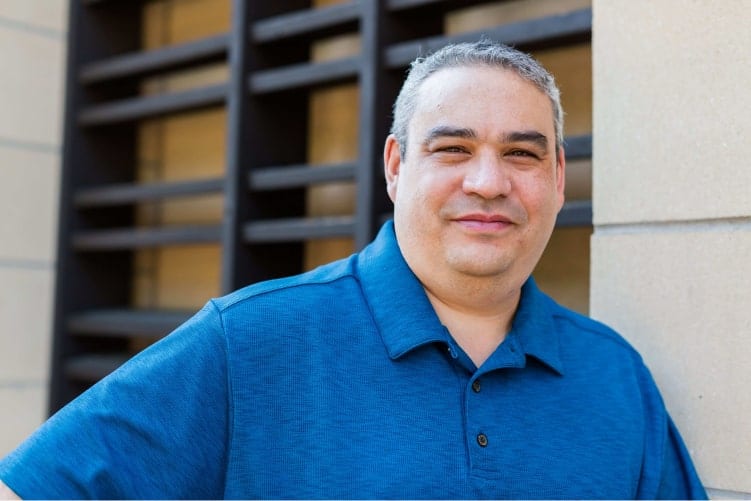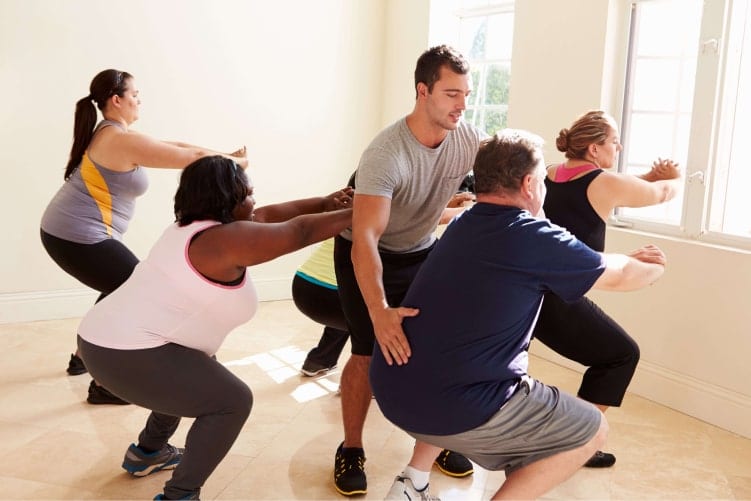The Khalili Center's LAP-BAND Aftercare Recovery Program
We are committed to our patients for life. The Khalili Center family believes that putting our patients first is crucial to their weight loss journey.
Book your consultationWe provide patients with a holistic and comprehensive program consisting of follow-up appointments, monthly walks with the doctors, counseling sessions with a psychologist, and consultations with our dietitian.
Moreover, patients can also benefit from our community activities, such as support groups, education seminars, and 5K walks organized by the Khalili Foundation.
A Leader in Lap-Band Surgery in California
The Khalili Center is home to board-certified bariatric surgeons specializing in advanced gastric banding surgery using the Lap-Band® System. Apart from Lap-Band, our surgeons are also experts in other weight-loss procedures, such as gastric bypass surgery and gastric sleeve surgery (sleeve gastrectomy).
Our founder, Dr. Theodore M. Khalili, MD, FACS, is a pioneer in minimally-invasive techniques and laparoscopic procedures. Having performed more than 8,000 advanced bariatric procedures, Dr. Khalili is the first surgeon to perform a robotic-assisted gastric bypass in the United States in 2002.
Like Dr. Khalili, all the surgeons at the Khalili Center are well-respected doctors in their field, having written numerous scientific articles on cutting-edge surgical techniques and technologies.
Watch the video
My name is Dr. Theodore Khalili, surgeon and founder of Weight Loss Surgery of Southern California. I founded the Center because I have dedicated my life-long professional work to patient care. My approach to patient-centric partnerships and service-oriented facilities offer a comprehensive and holistic approach to bariatric treatment – all in one place.
I believe that patient care does not end right after surgery – it’s only the beginning. I founded the Center to give patients access to a supportive community that guides them through each step of the weight loss journey. We work with a team of registered dieticians, psychologists and general doctors to create tailored, best-in-class care available.
I have performed over 8,000 bariatric surgeries…
Read more
Dr. Theodore M. Khalili,
Founder and Director of the Khalili Center for Bariatric Care

Scroll
Pre-SurgeryPreparation.

Upon confirmation of your Lap-Band procedure, our patient care team will take over and guide you through pre-surgery guidelines. The guidelines will include diet restrictions and exercise routines. Two weeks before the surgery, our dietitian will instruct you to transition to a liquid diet with a few permissible snacks. Solid food menus and drink choices will be provided to help you during this adjustment.
These restrictions will contribute to the surgery’s success. It is well-documented that weight management before surgery provides several benefits, such as improved blood sugar levels, liver volume, and shorter hospital stay(1). The surgeon will also ask you to undergo health examinations, blood tests, and diagnostic tests to predict outcomes and the possibility of complications.
You will also be interviewed regarding your commitment to a lifestyle change, medical history, and previous attempts to lose excess weight. Lastly, you will be asked to make arrangements with a friend or family member to assist you with hospital discharge and daily tasks at home during recovery.
How Long Is the Recovery Period?
The recovery period of Lap-Band patients can take approximately six weeks. Since the gastric banding placement is a laparoscopic procedure, you will be required to stay in the hospital overnight.
The gastric band procedure will require follow-up adjustments. The adjustments are usually conducted within the two years following the procedure. Every adjustment procedure will require some adjustments to food intake.
Recovery time for food intake can take around four weeks. If the procedure is well-tolerated, our dietitian will clear you to start having solid foods again.

Post-op Notes: What to Expect

Changes in Diet
After the procedure, you can drink small sips of water. During the two to three days after the surgery, you can only consume clear liquids like water, thin broths, and clear soups.
After the third day, you can transition to sugar-free drinks, skim milk, protein shakes, vegetable juice, or soups. The full-liquid diet must be continued for ten days following the procedure.
Around two weeks after the surgery, you can transition to pureed foods. Transition to soft foods can be started as early as three weeks after the procedure. By your fourth week, you can gradually go back to a regular diet, consisting of small portions and balanced meals. Our experts at the Khalili Center will work with you to create a nutrition program that fits your unique needs. We will also prepare guidelines to help you achieve your daily nutritional goals.

Activities and Work
You must take it easy for the first week following Lap-Band surgery. If you have an administrative desk job, you can go back to work one week after the procedure. If your job is labor-intensive, you will need six weeks to recover before going back to work.
Driving is not recommended while you are on pain medication.

Pain Medication and Supplements
Our surgeon will prescribe pain medication for the first week. The need for pain medication will subside a couple of days after the surgery.
Our dietitian will also ask you to take liquid supplements, such as multivitamins, vitamin B12, C and D, calcium, and Iron(2). The supplements will help replenish the nutrient shortage caused by the liquid diet.

Tips for Faster Healing and Long-Term Success
- Keep a regular exercise regime. An active lifestyle can reduce excess weight.
- Measuring the amount of food you eat per meal can help avoid acid reflux.
- Avoid alcohol or caffeine.
- Be aware of your protein goal and try to achieve this daily.
- Avoid consuming too much starch.
- Drink fluids thirty minutes before or after eating
- Avoid eating sweets and fatty foods.
- Plan your meals to ensure the right food choices are included
- Eat fresh fruits and vegetables.
- Have small but more frequent meals
- Limit your overall carb intake to 20 to 30 grams a day

What to Expect After a LAP-BAND Procedure
Like other weight-loss surgeries, Lap-Band surgery is a tool that can jumpstart your weight-loss journey. The procedure is best paired with an active lifestyle and a healthy diet. If you actively follow the aftercare program, the Lap-band can help you reduce your total body weight by one to two pounds per week.
It is well-observed that patients who received Lap-band surgeries can lose approximately 46% of their excess weight within the first year(3).
FAQs
What is Lap-Band Surgery?
Laparoscopic adjustable gastric banding (LAGB) is a procedure that wraps a silicone band around the stomach. This procedure creates a feeling of fullness after a small meal, resulting in reduced calories and eventual weight loss.
The procedure is performed through small incisions on the abdomen. A laparoscope (camera) and special instruments are inserted through the incision sites. The surgeon, watching through a monitor, installs the silicone band around the upper part of the stomach to create a small pouch.
Individuals suffering from obesity and its associated comorbidities can benefit from the procedure. LAGB qualifications usually require a body mass index (BMI) of 30 to 40(4).
What are the Side Effects and Risks of LAP-BAND Surgery?
Although gastric banding has been proven to be safer compared to other bariatric surgeries, it may still present some risks and side effects. Our surgeons will ensure that you are informed of the possible complications of the surgery.
Laparoscopic adjustable gastric banding may present the following side effects and risks(5):
- Pouch enlargement
- Band slippage or erosion (rare)
- Infections
- Nausea and vomiting
- Port breakage
- Blood clots (6)
References
- Sherf Dagan, S., Goldenshluger, A., Globus, I., Schweiger, C., Kessler, Y., Kowen Sandbank, G., Ben-Porat, T., & Sinai, T. (2017). Nutritional Recommendations for Adult Bariatric Surgery Patients: Clinical Practice. Advances in nutrition (Bethesda, Md.), 8(2), 382–394. https://doi.org/10.3945/an.116.014258
- Sherf Dagan S, Goldenshluger A, Globus I, et al. Nutritional Recommendations for Adult Bariatric Surgery Patients: Clinical Practice. Adv Nutr. 2017;8(2):382-394. Published 2017 Mar 15. doi:10.3945/an.116.014258
- Lap-Band Official Website. Excess weight results. Retrieved from https://www.lapband.com/
- Imes CC, Burke LE. The Obesity Epidemic: The United States as a Cautionary Tale for the Rest of the World. Curr Epidemiol Rep. 2014;1(2):82-88. doi:10.1007/s40471-014-0012-6
- Eid, I., Birch, D. W., Sharma, A. M., Sherman, V., & Karmali, S. (2011). Complications associated with adjustable gastric banding for morbid obesity: a surgeon’s guides. Canadian journal of surgery. Journal canadien de chirurgie, 54(1), 61–66. https://doi.org/10.1503/cjs.015709
- Froehling DA, Daniels PR, Mauck KF, et al. Incidence of venous thromboembolism after bariatric surgery: a population-based cohort study. Obes Surg. 2013;23(11):1874-1879. doi:10.1007/s11695-013-1073-1
Your Journey to Overcoming Obesity Starts Here.
Weight loss surgery is a tool to reset your life.
Our comprehensive program is everything you need to set you up for your new life and to keep the weight off. All you have to to find out if we’re right for you is to book an appointment.



